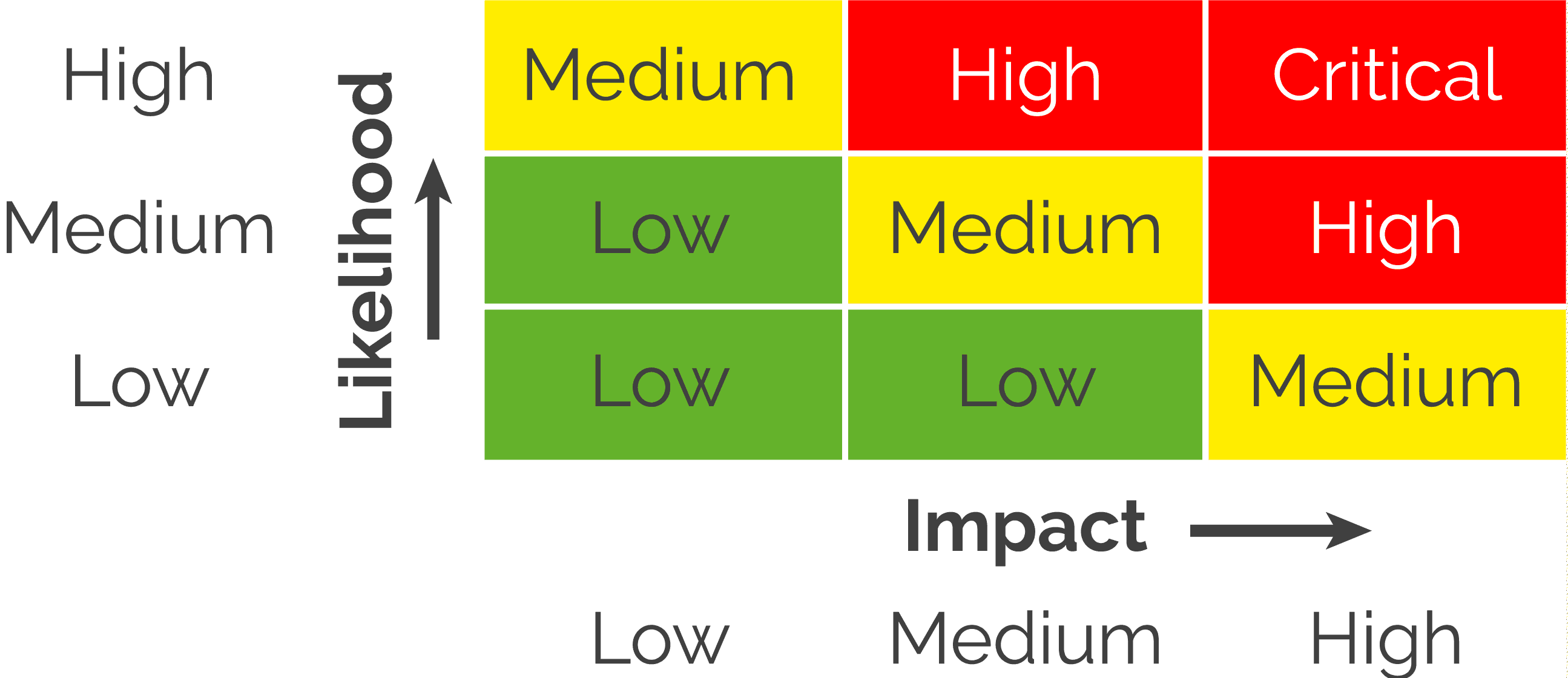The challenge of managing the patching process in-house, combined with the costs of hiring in-house staff, can leave many organizations feeling overwhelmed and at risk.
Organizations of all sizes face the risk of unpatched vulnerabilities impacting their security.
From small businesses to large enterprises, every company is at risk of a cyber attack if vulnerabilities are left unpatched.
The average time to patch a critical or high vulnerability is 90 to 180 days.
The consequences of not properly managing vulnerabilities can be devastating; with two-thirds of small and medium-sized businesses (SMBs) going out of business after suffering a major cyber attack.
To sum it up:
Organizations choosing to scan and patch once per month are choosing to accept the risk of a vulnerability compromising their systems for the other 29 days.
In this article, you’ll learn what patch management is along with the key pitfalls to avoid when developing a patching program.
Free Security Policy Templates
Get a step ahead of your cybersecurity goals with our comprehensive templates.

What Is Patch Management?
 Patch management refers to the process of identifying, acquiring, testing, and installing software updates (also known as patches) to an organization’s systems. These patches aim to fix vulnerabilities and improve the overall security posture of the system.
Patch management refers to the process of identifying, acquiring, testing, and installing software updates (also known as patches) to an organization’s systems. These patches aim to fix vulnerabilities and improve the overall security posture of the system.
As part of a comprehensive security program, organizations must manage vulnerabilities to prevent cyber attacks and protect sensitive data.
The Benefits Of A Patch Management
- The first benefit of having a patch management program is that it helps to improve an organization’s security posture. By staying up-to-date with the latest patches, an organization can reduce its exposure to vulnerabilities and lower its risk of a data breach. Regularly applying patches ensures that an organization’s systems and applications are secure from known threats.
- The second benefit is that a patch management program is cost-effective compared to the cost of a data breach. The cost of a data breach can be significant, including not just the cost of restoring systems and data but also the loss of business and damage to an organization’s reputation. Investing in a patch management program helps to prevent a data breach and reduces the overall cost of managing risk.
- Finally, a patch management program can help organizations comply with regulatory requirements. Many regulations, such as the GDPR and HIPAA, require organizations to implement security measures to protect sensitive data. A formal patch management program demonstrates that an organization is taking its security responsibilities seriously and helps to ensure compliance with these regulations.
How The Patch Management Process Works
Patch management is a step in a vulnerability management program.
Vulnerability management is a holistic approach to managing cyber risk and encompasses the entire lifecycle of a vulnerability.
The goal of patch management is to keep software and systems:
- Up-to-date
- Secure
- Performing optimally
Patch management is a critical step in this process, as it helps organizations address the security vulnerabilities that threaten their systems and data.
By staying current with patches, organizations can minimize their risk and protect themselves against known threats.
However, many other factors contribute to an organization’s overall security posture, including network security, access controls, user training, and incident response.
By incorporating patch management into a broader vulnerability management program, organizations can effectively manage their security risk and maintain the confidence of their customers, partners, and stakeholders.
Learn More: Patch Management Vs Vulnerability Management
Step 1: Identify and Assess Vulnerabilities
The first step in the patch management process is to identify and assess the vulnerabilities in your systems and applications.
This involves using vulnerability scanning tools to identify potential weaknesses in your IT infrastructure.
The goal is to identify all vulnerabilities that could impact your security posture and prioritize them based on their severity.

This helps to ensure that the most critical vulnerabilities are addressed first.
It’s important to note that vulnerabilities with a lower risk score shouldn’t be ignored.
Often times these lower-scored vulnerabilities can be the entry of a greater attack path that threat actors use to compromise an organization’s network.
Step 2: Evaluate Available Patches
Once you have identified the vulnerabilities, the next step is to evaluate the available patches.
This involves reviewing the patches that are available to address the vulnerabilities and determining which ones are appropriate for your organization.
Factors such as the age of the patch, the number of vulnerabilities it addresses, and the impact on your IT infrastructure will be considered.
Learn More: Patch Management Metrics: Top 10 KPIs to Measure Success
Step 3: Test and Deploy Patches

After evaluating the available patches, the next step is to test and deploy them.
This involves testing the patches in a controlled environment to ensure that they do not cause any unintended consequences or disruptions.
Once the patches have been tested and validated, they can then be deployed to the production environment.
Step 4: Monitor And Verify
 The final step in the patch management process is to monitor and verify that the patches have been successfully deployed and are functioning as intended.
The final step in the patch management process is to monitor and verify that the patches have been successfully deployed and are functioning as intended.
This involves monitoring your systems for any issues or unintended consequences and verifying that the vulnerabilities have been addressed.
Ongoing monitoring is critical to ensure that new vulnerabilities are identified and addressed in a timely manner.
Types Of Patches For Popular IT Environments
Patch management programs often include installing patches or updates on common operating systems, applications, and other software within different IT infrastructures, including:
- Windows Patch Management
- Cloud Patch Management
- AWS Patch Management
- Azure Patch Management
- MAC Patch Management
- DevOps Patch Management
Windows Patch Management
 Windows is one of the most commonly used operating systems in the world, making Windows patch management a crucial aspect of any organization’s cybersecurity strategy.
Windows is one of the most commonly used operating systems in the world, making Windows patch management a crucial aspect of any organization’s cybersecurity strategy.
Two popular Windows patch management systems are Windows Server Update Services (WSUS) and System Center Configuration Manager (SCCM). These systems provide an automated method for downloading, deploying, and managing patches for Windows systems.
Cloud Patch Management
![]() Cloud-based patch management systems offer a centralized platform to manage patches for systems in a cloud environment. These systems can be used to manage patches for a wide range of cloud-based applications, including infrastructure as a service (IaaS), platform as a service (PaaS), and software as a service (SaaS) solutions.
Cloud-based patch management systems offer a centralized platform to manage patches for systems in a cloud environment. These systems can be used to manage patches for a wide range of cloud-based applications, including infrastructure as a service (IaaS), platform as a service (PaaS), and software as a service (SaaS) solutions.
AWS Patch Management
AWS (Amazon Web Services) is one of the largest cloud computing platforms in the world. AWS patch management refers to the process of managing patches for AWS infrastructure and services. AWS provides several tools to help with patch management, including Amazon EC2 Systems Manager and AWS Patch Manager.
Azure Patch Management
Microsoft Azure provides its patch management system that helps organizations keep their systems and applications up-to-date with the latest security patches and software updates.
The Azure Patch Management system integrates with the Azure management tools and processes to streamline the patching process and minimize downtime.
This patch management solution is designed to help organizations easily manage the patching process for their Azure-based virtual machines.
With Azure Patch Management, administrators can automate the process of patching, configure update policies, view the update status of their virtual machines, and get detailed reports on the patching process.
MAC Patch Management
Mac computers have become increasingly popular in recent years, making MAC patch management an important aspect of any organization’s cybersecurity strategy. There are several third-party patch management systems available for MAC, including JAMF Software’s Casper Suite, Ivanti’s Endpoint Manager, and Parallels Mac Management.
DevOps Patch Management
DevOps patch management refers to the process of managing patches for systems and applications within a DevOps environment.
DevOps is a software development methodology that focuses on continuous delivery and deployment.
As such, patch management within a DevOps environment requires a more agile and automated approach to ensure that systems are updated quickly and efficiently.
The Importance Of A Patch Management Policy
By having a formal patch management policy in place, organizations can prioritize and manage the deployment of patches based on the severity of the vulnerability and the risk it poses to the organization. This helps minimize downtime and ensures that the most critical vulnerabilities are addressed first.
A well-defined patch management policy also helps organizations stay compliant with industry regulations, such as HIPAA, PCI-DSS, and others.
These regulations often require organizations to demonstrate that they have taken steps to protect sensitive data.
Having a patch management policy in place is one way to show that you take security seriously.
In addition, having a patch management policy in place helps establish a culture of security within the organization.
This culture helps ensure that all employees understand the importance of patching and the role it plays in reducing risk.
Learn More: Why Social Engineering Is Effective
The Challenges Of Patch Management
Effective patch management can be a complex and time-consuming process, and there are several common challenges that organizations face.
Here are three of the most significant ones:
- Keeping Up with the Volume of Patches
- Balancing Security and Business Needs
- Maintaining Compliance
Read More: Vulnerability Remediation: How To Automate Your Process
Challenge #1: Keeping Up With The Volume Of Patches
One of the biggest challenges of patch management is the sheer volume of patches that need to be applied.
With new vulnerabilities appearing regularly, organizations must stay on top of the latest patches to maintain their security posture.
This can be a daunting task, especially for organizations with large networks, complex IT environments, or limited resources.
Challenge #2: Balancing Security And Business Needs
Another challenge of patch management is striking the right balance between security and business needs. On the one hand, organizations must apply patches as quickly as possible to address security risks.
On the other hand, they need to minimize disruption to their operations and avoid downtime that could hurt productivity. This requires careful planning and coordination, as well as a strong understanding of the organization’s critical systems and processes.
Challenge #3: Maintaining Compliance
Finally, organizations must also consider compliance when it comes to patch management.
Many regulations, such as PCI DSS, HIPAA, and NIST, require organizations to implement secure patch management processes.
Failing to do so can result in costly fines and legal consequences, making it essential for organizations to have a clear and effective patch management policy in place.
Patch Management Tools
Patch management software is a tool that helps organizations manage, track, and deploy software updates to all their devices, including servers, laptops, and mobile devices.
It enables IT departments to automate the process of updating software in a timely and secure manner, ensuring that all systems are protected against vulnerabilities and security threats.
SolarWinds Patch Manager
SolarWinds Patch Manager is a software that provides an easy-to-use interface to manage patches for Windows and third-party applications.
It offers automated patch deployment, detailed reporting, and integration with other SolarWinds products. This tool is ideal for organizations looking for a comprehensive patch management solution for Windows-based systems.
System Center Configuration Manager
System Center Configuration Manager (SCCM) is a software that helps manage large scale systems and device configurations.
It also provides patch management capabilities, including automatic deployment of Windows updates, third-party application updates, and custom software updates. SCCM is a good fit for organizations with complex IT environments and a large number of systems to manage.
Ivanti
Ivanti Patch for SCCM is a software that integrates with System Center Configuration Manager to provide an enhanced patch management solution. It provides advanced reporting and automation features, making it a good fit for organizations looking to streamline their patch management process.
ManageEngine Patch Manager Plus
ManageEngine Patch Manager Plus is a software that provides a central platform for Windows and third-party application patch management.
It offers automated patch deployment, reporting, and integration with Active Directory. This tool is suitable for organizations of all sizes looking for a comprehensive and easy-to-use patch management solution.
LanSweeper
LanSweeper is a software that provides IT asset management and patch management capabilities.
It scans networks to identify systems, software, and vulnerabilities and provides automated patch deployment. This tool is ideal for organizations with limited IT resources that need to quickly and effectively manage their patching process.
PurpleSec’s Patch Management Services
PurpleSec’s patch management services provide a comprehensive solution for organizations struggling to keep pace with their growing security needs.
With security teams often stretched thin, relying solely on in-house tools can lead to gaps in coverage and missed vulnerabilities.
PurpleSec offers a combination of technology and expert support, ensuring that vulnerabilities are identified and patched promptly and that an organization’s overall security posture remains strong.
By outsourcing patch management, organizations can free up internal resources and rest assured that their systems are being properly secured.
Reduces Mean Time To Patch Vulnerabilities
By partnering with PurpleSec for patch management services, organizations are able to effectively reduce their mean time to patch vulnerabilities.
This not only protects against cyber attacks but also saves time and money for the organization.
In one client case, we were able to deliver a 75% reduction in mean time to resolution, an 86% reduction in vulnerability risk, and an average annual savings of $1M. In addition, PurpleSec reduced process length by 50% and increased overall security posture rating by 11%.
Automates The Patch Management Process
PurpleSec’s patch management services provide an automated solution that streamlines the patch management process.
By automating the process, PurpleSec reduces the workload for IT and security teams, freeing them up to focus on other critical tasks.
The automation also ensures that patches are applied in a timely and efficient manner, reducing the risk of vulnerabilities and improving the overall security posture of the organization.
A Continuous Patch Management System
PurpleSec’s continuous patch management services are designed to provide organizations with a comprehensive approach to patch management.
With 24/7 monitoring, risk prioritization, and continuous improvement, PurpleSec’s services work to keep organizations protected from evolving cyber threats.
Learn More: Why Continuous Vulnerability Management Is Essential
Wrapping Up
A comprehensive and continuously evolving approach to vulnerability management is crucial in today’s rapidly changing cyber threat landscape.
A patch management program is an essential component of vulnerability management, helping organizations identify, assess, and prioritize vulnerabilities, as well as automate and streamline the patching process.
By automating patch management, security teams can free up their time to focus on other critical tasks and reduce the mean time to patch vulnerabilities.
PurpleSec offers a comprehensive patch management solution, with 24/7 continuous monitoring, that helps organizations reduce their risk and improve their overall security posture.
Article by



